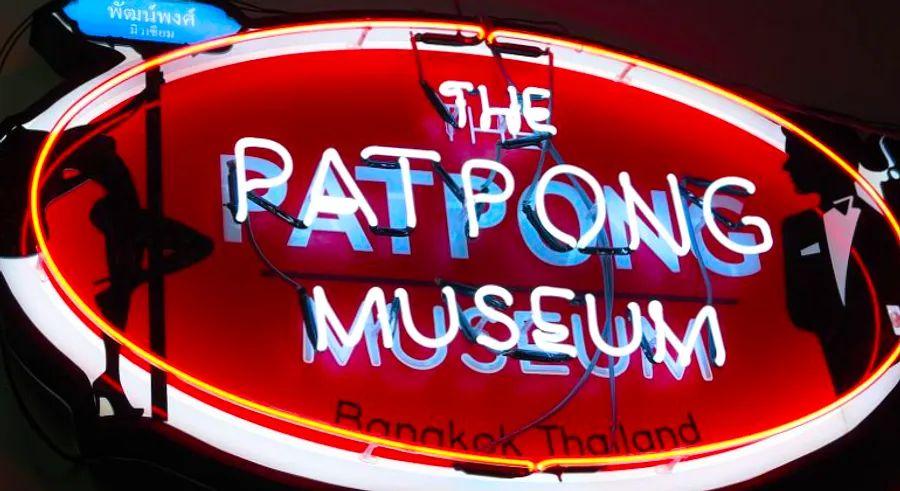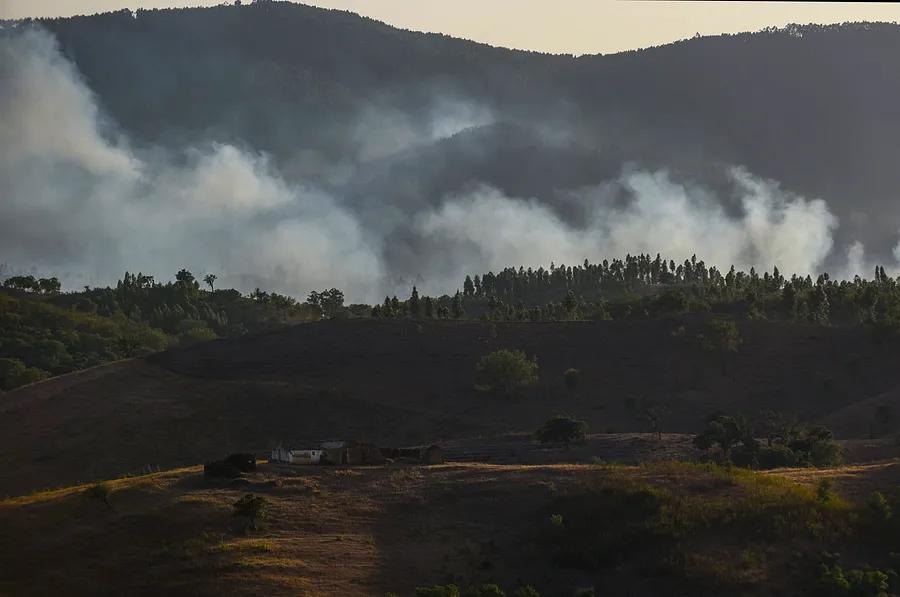Bangkok’s red-light district secrets unveiled in new museum

A new museum dedicated to one of Bangkok’s most notorious nightlife areas, Patpong Road, showcases displays on prostitution, CIA involvement, the Vietnam War, and Chinese immigration.
In addition to exhibits on ‘Triple X’ entertainment, fetish culture, and cabaret performances, the museum also features pop culture moments such as David Bowie’s 1983 visit to Bangkok and references to the 1978 film ‘The Deer Hunter,’ which filmed scenes in the former Patpong bar Mississippi Queen.
The museum’s most captivating feature is its exploration of Patpong’s covert connections to the US Central Intelligence Agency’s operations in Laos during the US-Vietnam War, which lasted from the 1960s to 1974.
Opened in October, the 300-square-meter Patpong Museum reveals why American soldiers, engaged in the fight against communism, sought refuge in Patpong for business, camaraderie, and indulgent escapades during the war.
It also highlights how Patpong transformed over the years, drawing in hundreds of thousands of tourists and expats, before the action gradually shifted to other bars across Bangkok, notably to Soi Cowboy and the Nana Entertainment Plaza.
The lesser-known history of Patpong
Michael Messner, the museum’s founder and curator, shares with Dinogo Travel that he created the space to preserve and showcase Patpong’s captivating history, unveiling details that many are unaware of, from the evolution of its unique businesses to its distinct venues.
“Everyone knows Patpong today,” Messner says. “But few truly understand its story. Most people associate it with just one thing — ‘Patpong ping-pong.’ Sure, we’ll touch on that, but there’s so much more to uncover.”
Messner is ideally suited to run such a museum. After managing a museum in Austria in the 1990s, he shifted his focus to Bangkok’s nightlife, investing in various entertainment venues, including some in Patpong itself.
From banana farm to red-light district
Patpong Road’s history traces back to a Chinese immigrant, Luang Patpongpanich, who bought the land when it was still a banana plantation.
The museum features an interactive exhibit with two heavy rice sacks connected by a bamboo pole, allowing visitors to experience the strain felt by laborers carrying 35-kilogram loads.
During World War II, Udom, Patpongpanich’s son, reportedly studied in the United States and later joined the Office of Strategic Services (OSS), which later became the CIA.
According to museum sources, the OSS trained Udom as a Seri Thai (“Free Thai”) fighter against Japan’s occupation of Thailand. This story is corroborated by a 1985 interview with Udom in Asia Magazine and a 1996 obituary in the Guardian newspaper in London.
However, the war ended before he could return home.
Upon returning to Bangkok, Udom transformed his family’s land into Patpong Road, lining it with shop houses that he rented out to his OSS and CIA acquaintances, according to Messner.
“Mizu’s Kitchen was the first food and drink establishment in Patpong, run by a former Japanese soldier who had been part of the occupying forces. He fell in love with the area so much that he decided to stay,” Messner explains.
“The Foreign Correspondents’ Club’s first office or meeting place was actually at Mizu’s Kitchen. It only closed its doors this year, about three months ago, and we saved the sign out front,” Messner adds, pointing to the worn-out signage.
Other tenants in Patpong during those years, as noted by museum displays, included the US Information Service library and ‘a CIA safe house’ above the Madrid Bar, where retired CIA agents were known to gather and socialize in later years.
The museum also showcases photographs of the late CIA officer Jack Shirley, taken at the Madrid Bar, which is still in operation today.
“Other tenants included IBM, Shell, and CAT – Civil Air Transport – a CIA-owned company,” Messner explains. “CAT operated covert missions across Asia from 1950 to 1959.”
CAT eventually evolved into the CIA’s Air America, dubbed “the world’s most shot-at airline,” particularly in Laos, where it carried troops, casualties, refugees, and essential supplies as part of the covert US operations against communism.

Air America operated out of the Air France building on Patpong until 1972.
According to several reports, at least 240 Air America pilots and crew members were killed by enemy fire.
A news clipping featured in the museum references a 1972 accusation by a US congressman, claiming that some pilots smuggled Lao opium for conversion into heroin for the American market. Air America pilots have denied these allegations. This story has been romanticized in films and books, which the CIA refers to as 'a distorted view,' largely influenced by the 1990 film 'Air America.'
“Secret wars… a covert airline based in Patpong Road,” says Messner. “And with it came the personnel who worked for this airline, and they began frequenting the area. We’ve received numerous contributions from a former Air America pilot for our exhibits.”
One such contribution is a typewritten letter, emblazoned with the Air America logo, from 3 Patpong Road, informing parents that their son had disappeared after his plane was shot down over Laos in 1963.
The museum also features anti-communist propaganda from the Thai government in the 1970s, contrasting China’s aggressive political indoctrination under Chairman Mao Zedong with a portrayal of Thailand’s calm and practical school lessons.
The legend of Tony Poe

A section of the museum is dedicated to Tony Poshepny, a man known as one of the CIA’s most notorious paramilitary officers, described by Messner as “one of the most famous and controversial figures to have frequently visited Patpong.”
As outlined in the museum's timeline of Patpong's history, Tony Poe became involved with SEA Supply, a CIA front company operating in the area, in 1958. However, Messner notes that he had been visiting the Civil Air Transport (CAT) offices in building number 1 on Patpong Road since as early as 1953, continuing to frequent the site until his departure to the United States in the 1990s.
Known by the nickname Tony Poe, he spent several years in northern Laos from the early 1960s, where he reportedly commanded thousands of ethnic Hmong fighters in brutal, scattered skirmishes against the communist Pathet Lao and their North Vietnamese allies.
To prove that his Hmong forces were killing Pathet Lao soldiers, Poe instructed them to begin severing the ears and heads of their enemies, Messner says.
When the American Embassy in Laos raised concerns about Poe's violent tactics, he reportedly took the severed ears, put them in a bag, and sent them to the then-Ambassador, G. McMurtrie Godley, leaving the diplomat and his staff horrified.
Poe also allegedly took severed heads and threw them out of helicopters at least twice, targeting high-ranking members of the Pathet Lao, according to Messner.
Despite the shocking nature of these allegations, Poe himself confirmed these notorious actions during an interview with this reporter in San Francisco in 2001, and in other interviews prior to his death in 2003.
According to Messner, it was all part of 'psychological warfare,' a point emphasized by photos, weapons, and other items that represent America's involvement in the wars in Laos, Cambodia, and Vietnam.
'Here are five human ears, severed and strung together on a chain, perhaps meant to be worn as a necklace,' Messner explains, referring to a display featuring rubber ears — a symbolic representation of Poe’s order for his Hmong fighters to sever ears.
While Poe never wore such a necklace, Messner points out that the act of cutting off ears is well-documented by multiple firsthand accounts, becoming a key part of Poe’s mythos. 'We take creative liberty to visually convey that impact for our visitors,' he adds.
Patpong’s infamous underbelly is also on display, offering a glimpse into the darker side of its storied history.
No Patpong Museum would be complete without showcasing the iconic attractions that have made the street famous over the years.
One section of the museum reimagines the Grand Prix bar, featuring a 3D projection of a go-go dancer in a bikini, bringing a piece of Patpong's past to life.
In another display, a woman's silhouette is paired with a heavy-duty ping-pong machine, which launches white balls at the audience for them to catch.
'On Patpong, everyone expects to see the ping-pong show,' says Messner, capturing the essence of the area’s infamous reputation.
Rather than showcasing a live performer, the museum has created this interactive exhibit, using a machine for an updated version of the classic show.
Some of the exhibits may leave visitors feeling uneasy, such as a video showing a bar worker preparing for a controversial 2013 performance involving a live goldfish.
Oculus Virtual Reality headsets provide visitors with the opportunity to explore Patpong’s notorious S&M fetish bar, offering a modern twist on the area’s infamous attractions.
Another display features a wall-mounted 'game' where visitors are challenged to identify if photos of Thai women depict someone born female.
However, not all are impressed by the museum or its controversial exhibits, which is almost to be expected given the sensitive nature of the subject matter.
Tom Vater, a journalist based in Bangkok, is one of those voicing mixed reactions to the museum, highlighting the complex and sometimes uncomfortable response it evokes.
'The United States was responsible for the deaths of around four million people during its wars in Southeast Asia, a period when Patpong was thriving,' says Tom Vater, co-writer of the documentary 'The Most Secret Place on Earth: America’s Covert War in Laos.'
'I visited Patpong multiple times while researching the film, especially the Crown Royal Bar and the Madrid Bar, where I interviewed former CIA, USAID, and Air America personnel,' Vater recalls.
'The veterans I spoke with, including ex-soldiers, pilots, secret service agents, and mercenaries, were mostly polite, candid, and forthcoming about their wartime experiences. However, many of the men who frequented the Patpong bars were implicated in atrocities, often committing heinous crimes. This raises important questions about the kind of museum that could be created here,' he says.
Patpong Today: More retail than revelry

In defense of his museum, Messner points out that the Vietnam War is an undeniable part of history.
'War results in death, and in the modern world, that reality is becoming increasingly abstract,' he reflects.
'Our aim with this living museum is to bring faces to the war and its victims, sparking controversy. We neither condemn nor glorify figures like Tony Poe or any others involved in the conflict,' Messner explains.
Today, Patpong’s two neon-lit lanes off the busy Silom Road still host bars where women perform on stage and engage in the hustle of serving drinks to patrons.
The vibrant Patpong Night Bazaar draws the majority of visitors. Every evening, outdoor stalls line Patpong Road, offering a variety of goods such as souvenirs, jewelry, luggage, handicrafts, along with knockoff watches, counterfeit designer accessories, and a range of other popular items.

1

2

3

4

5
Evaluation :
5/5